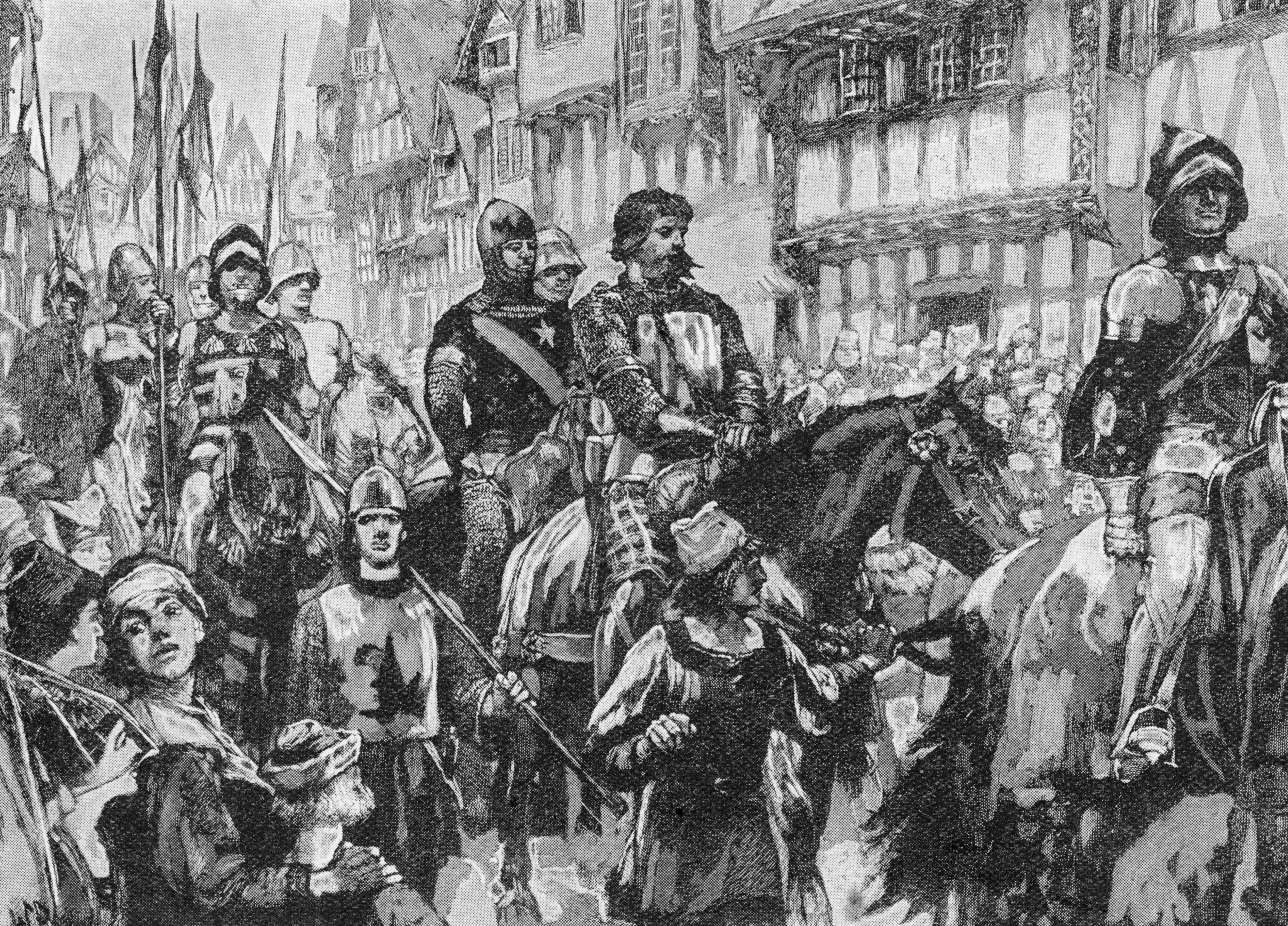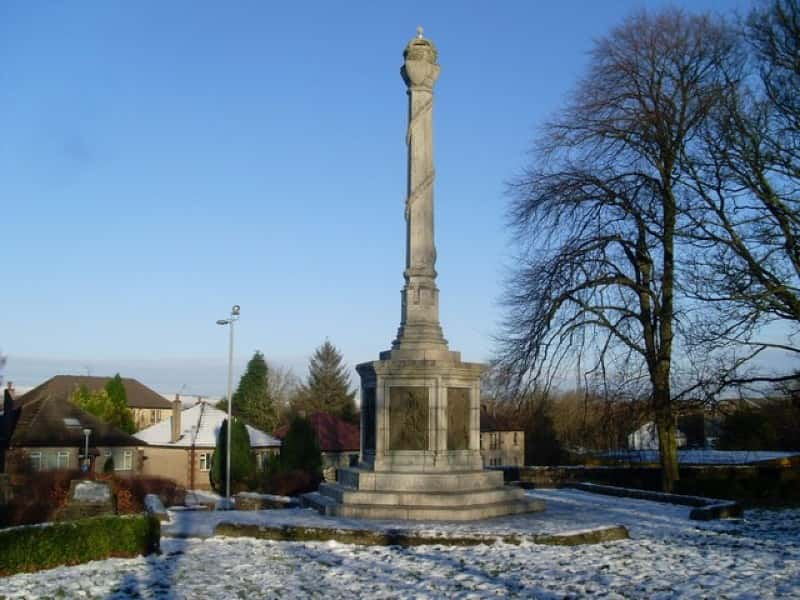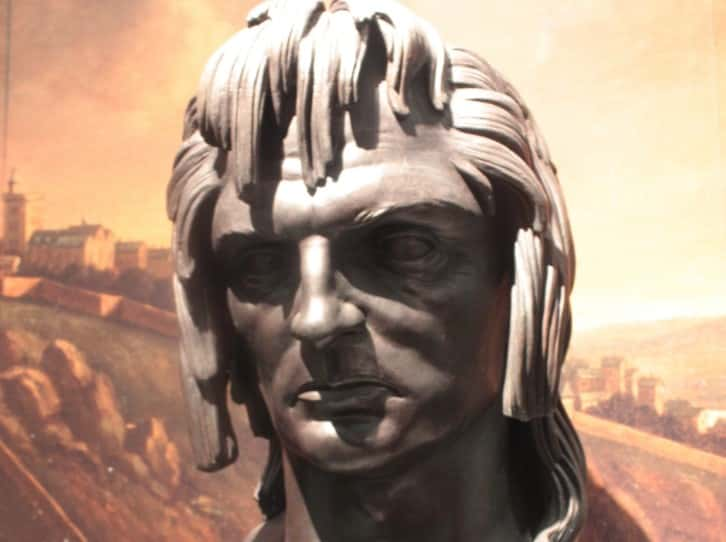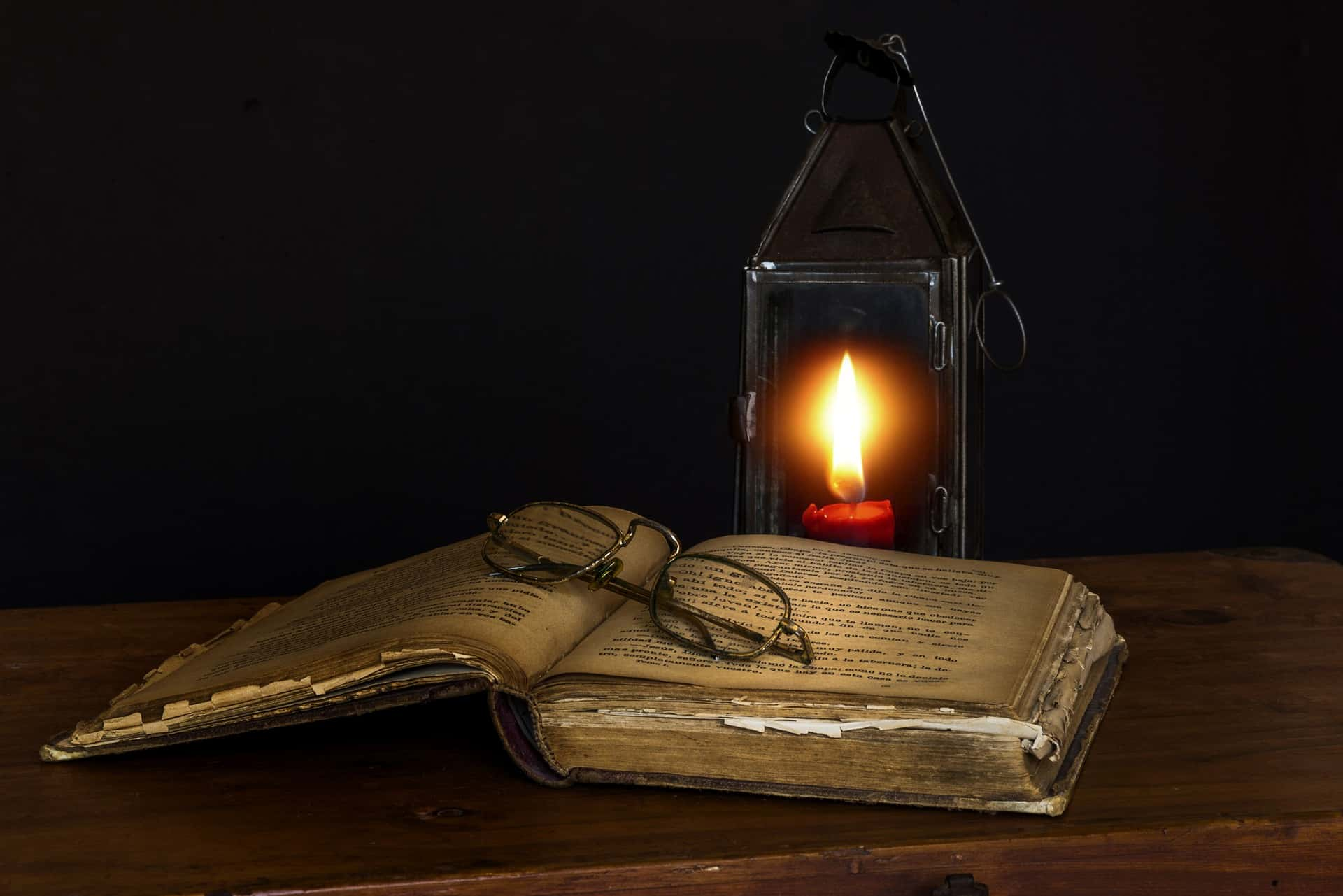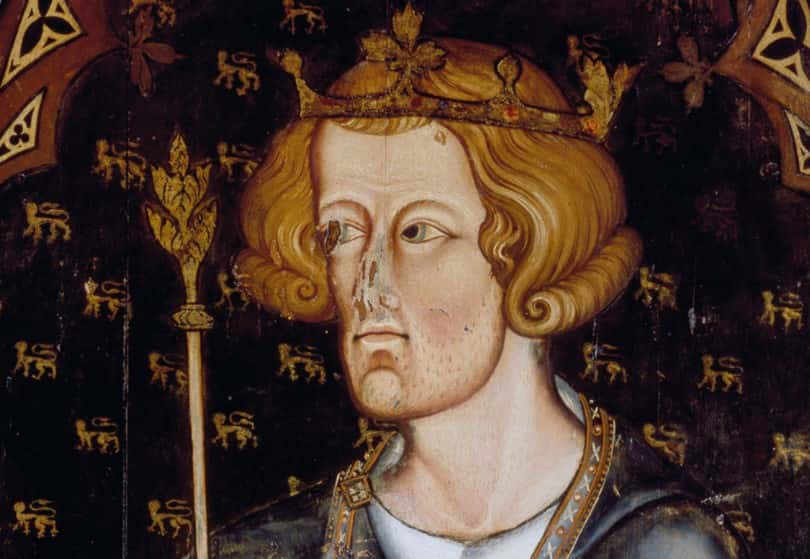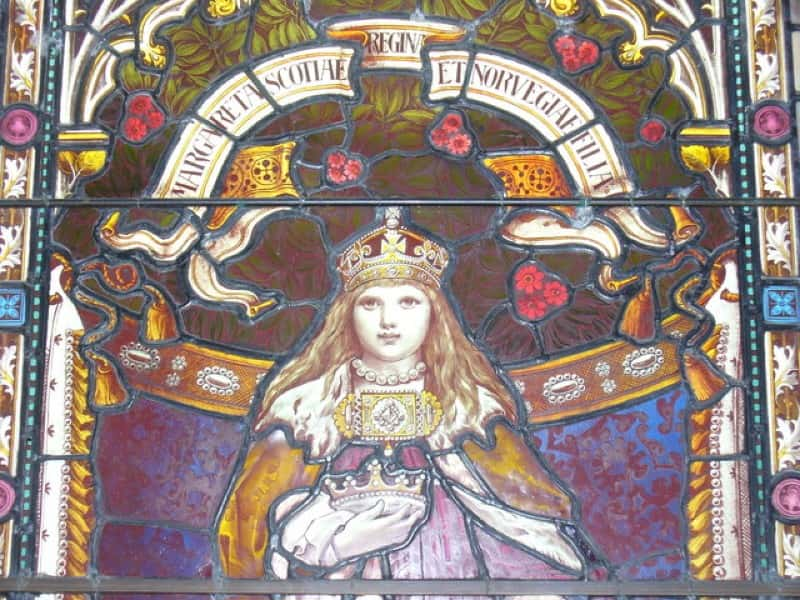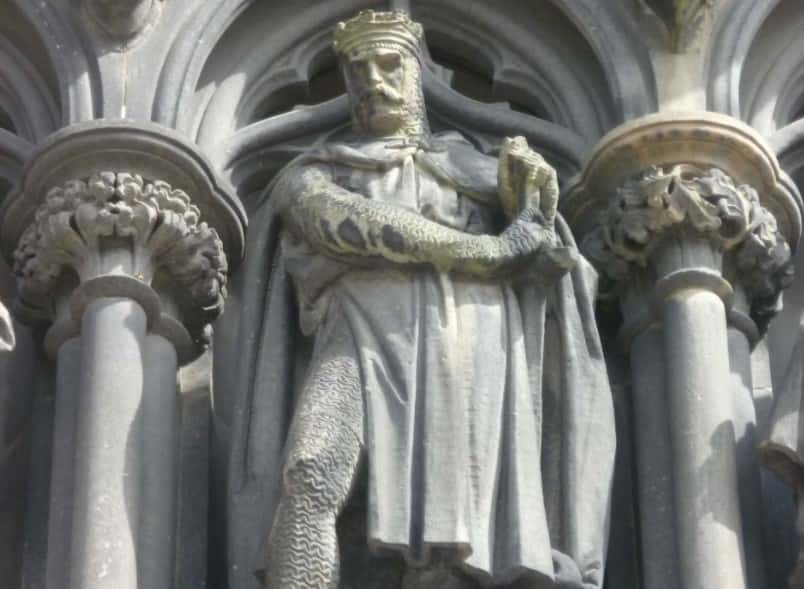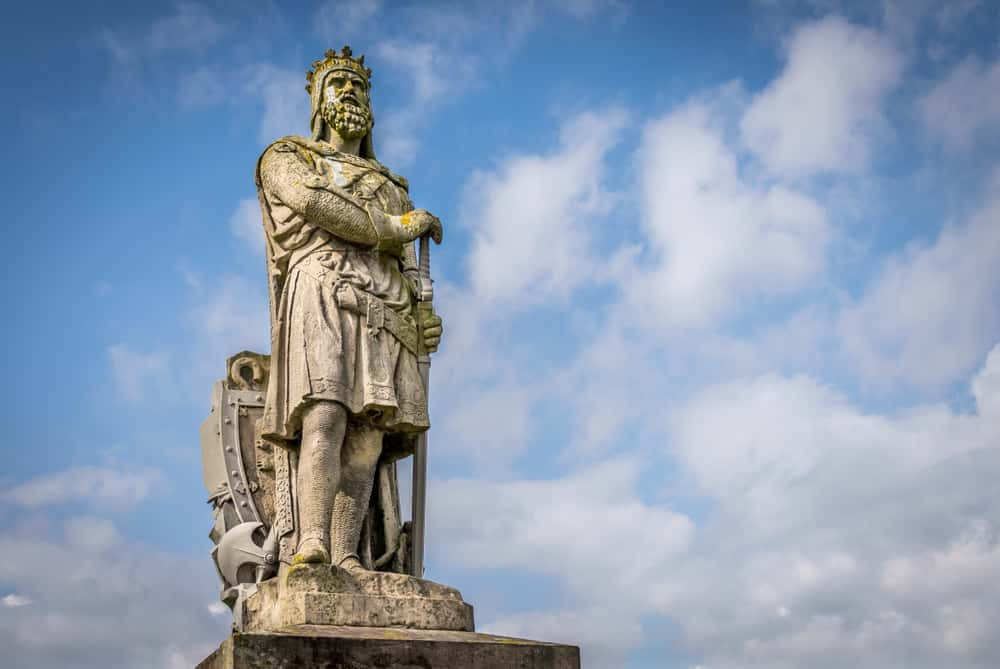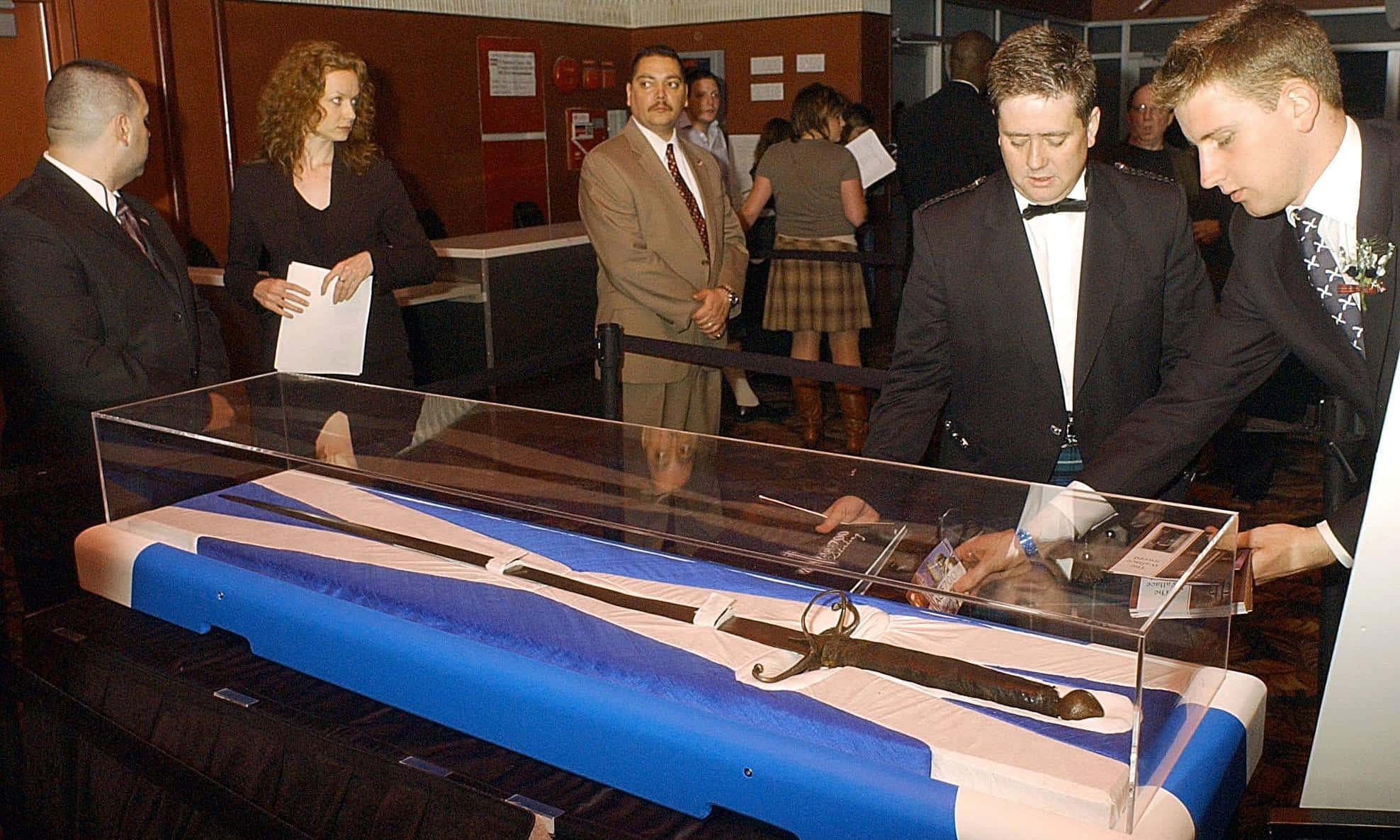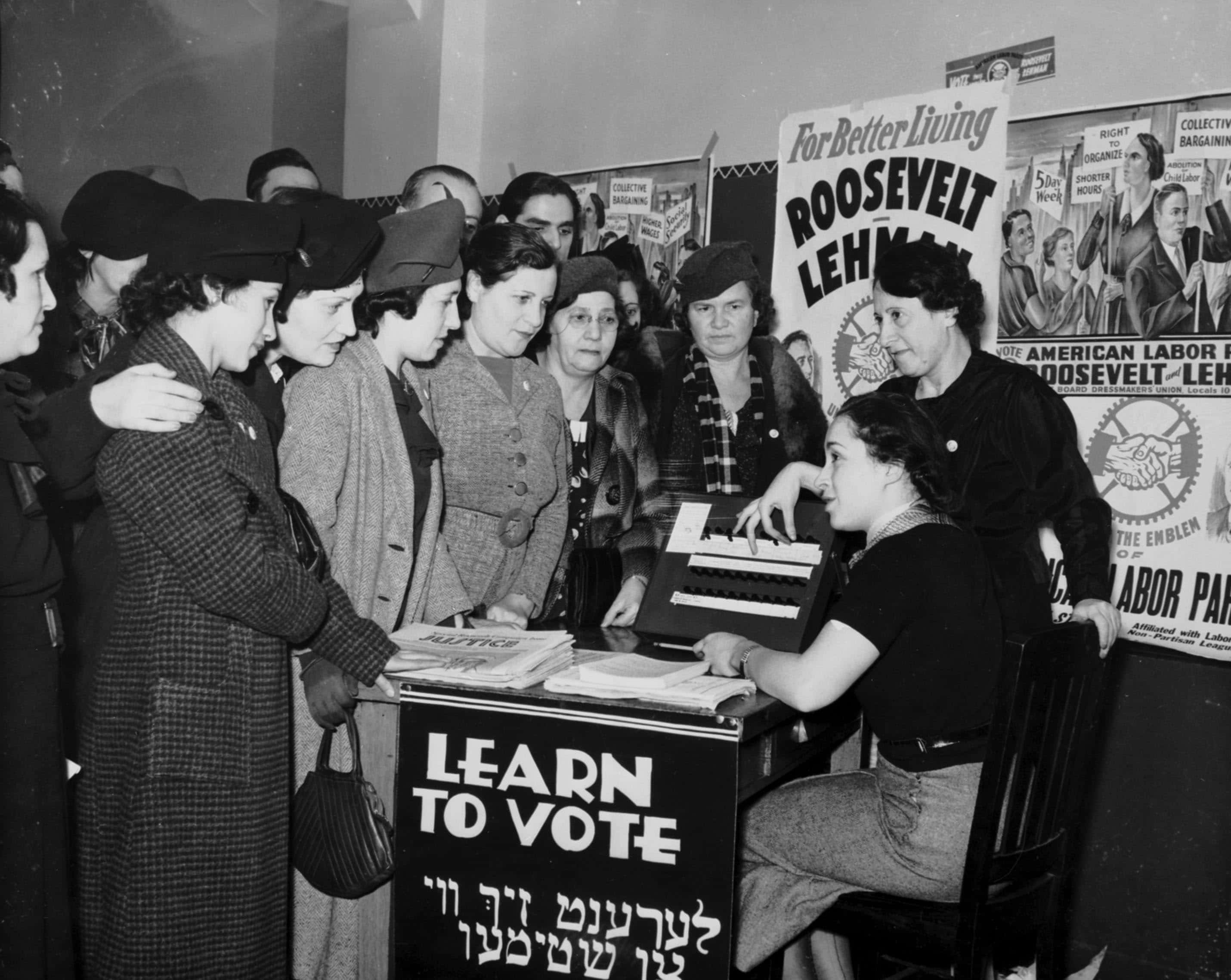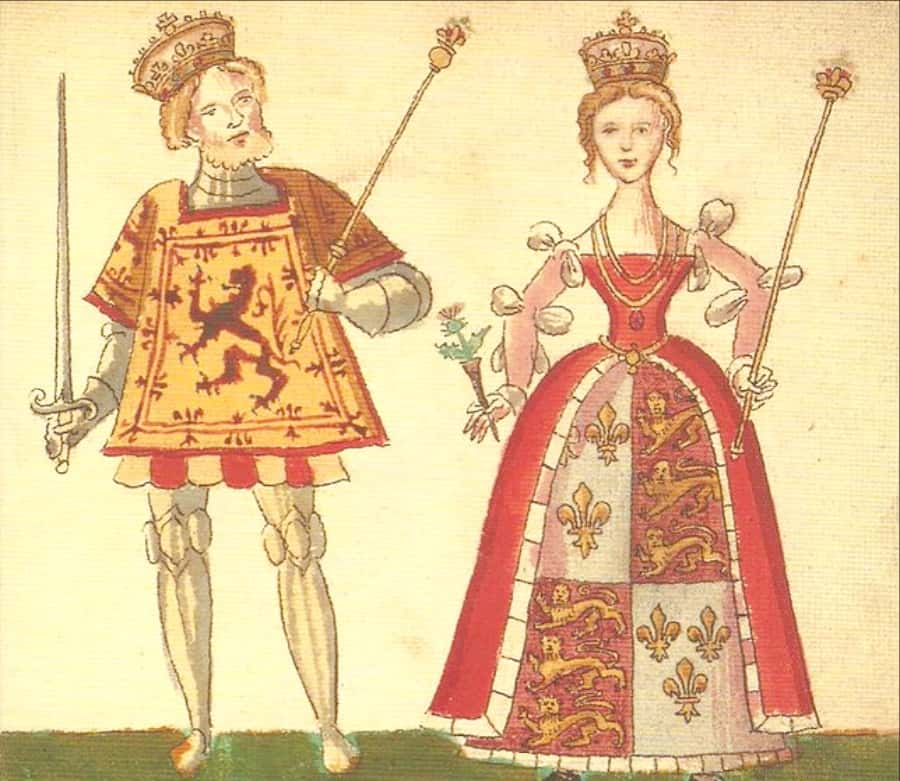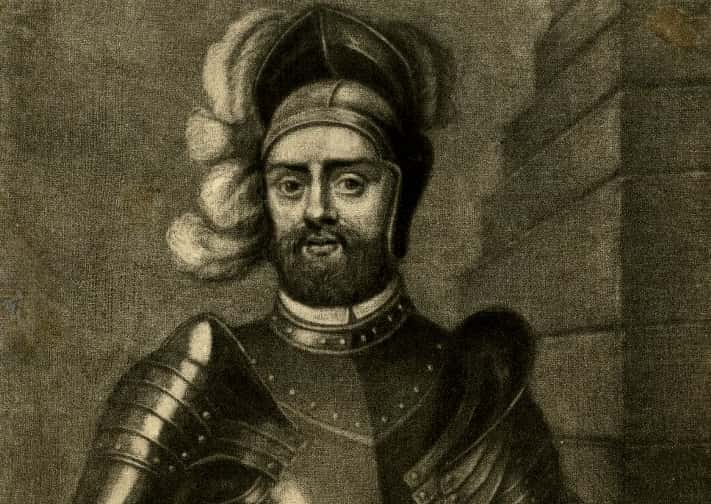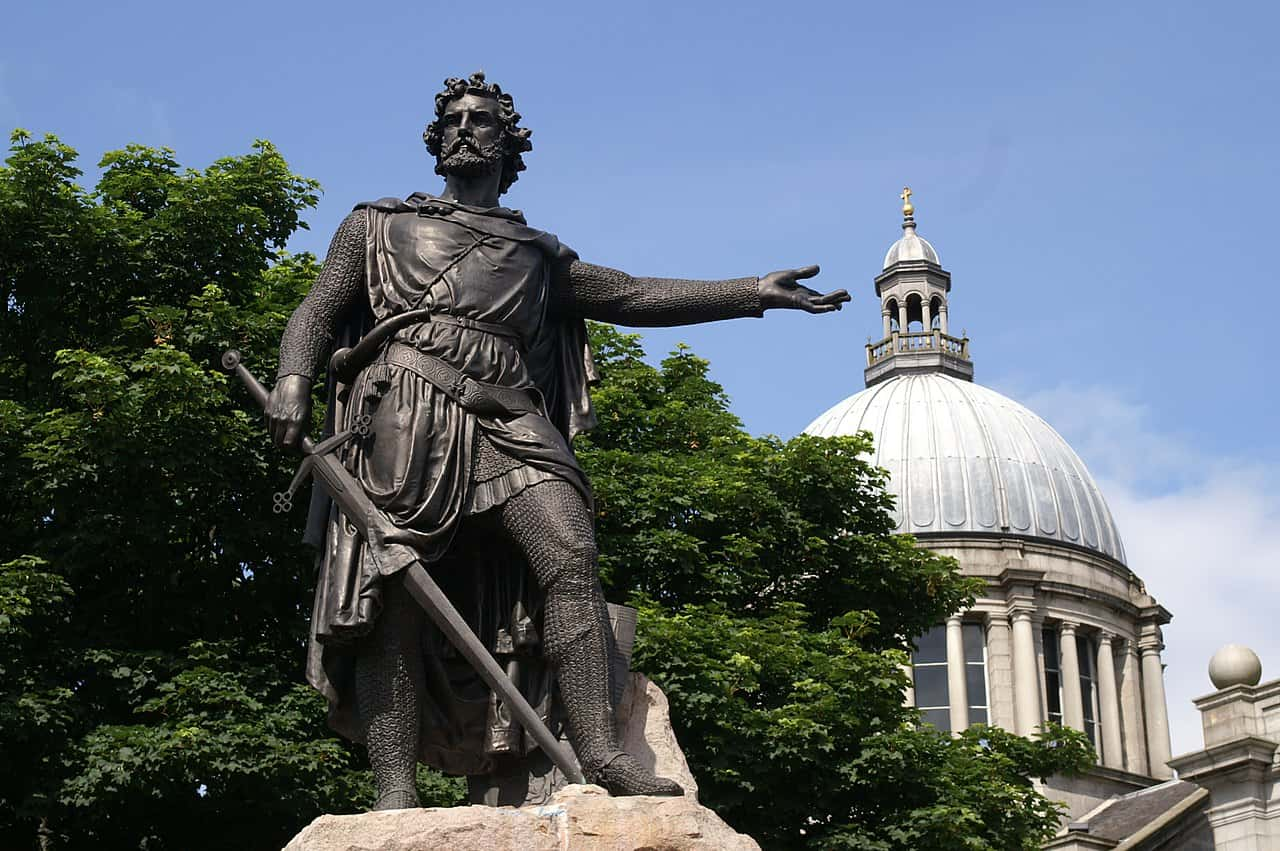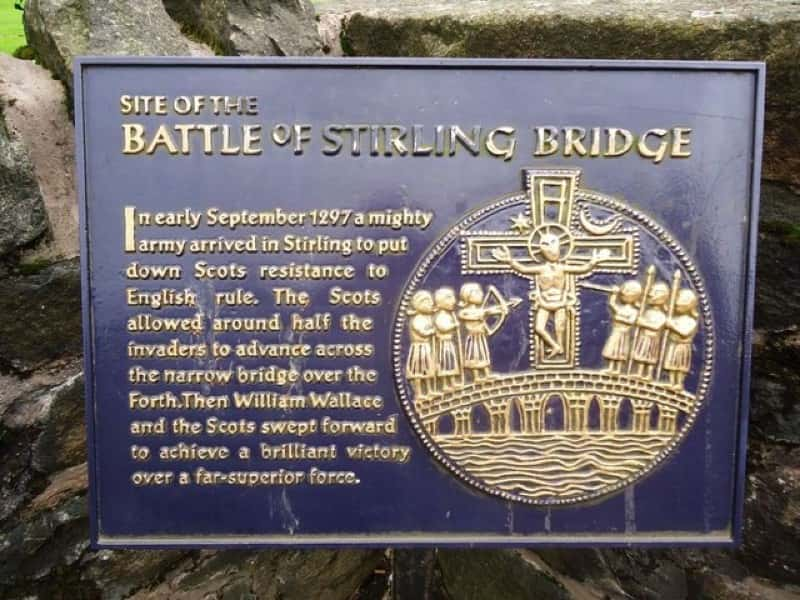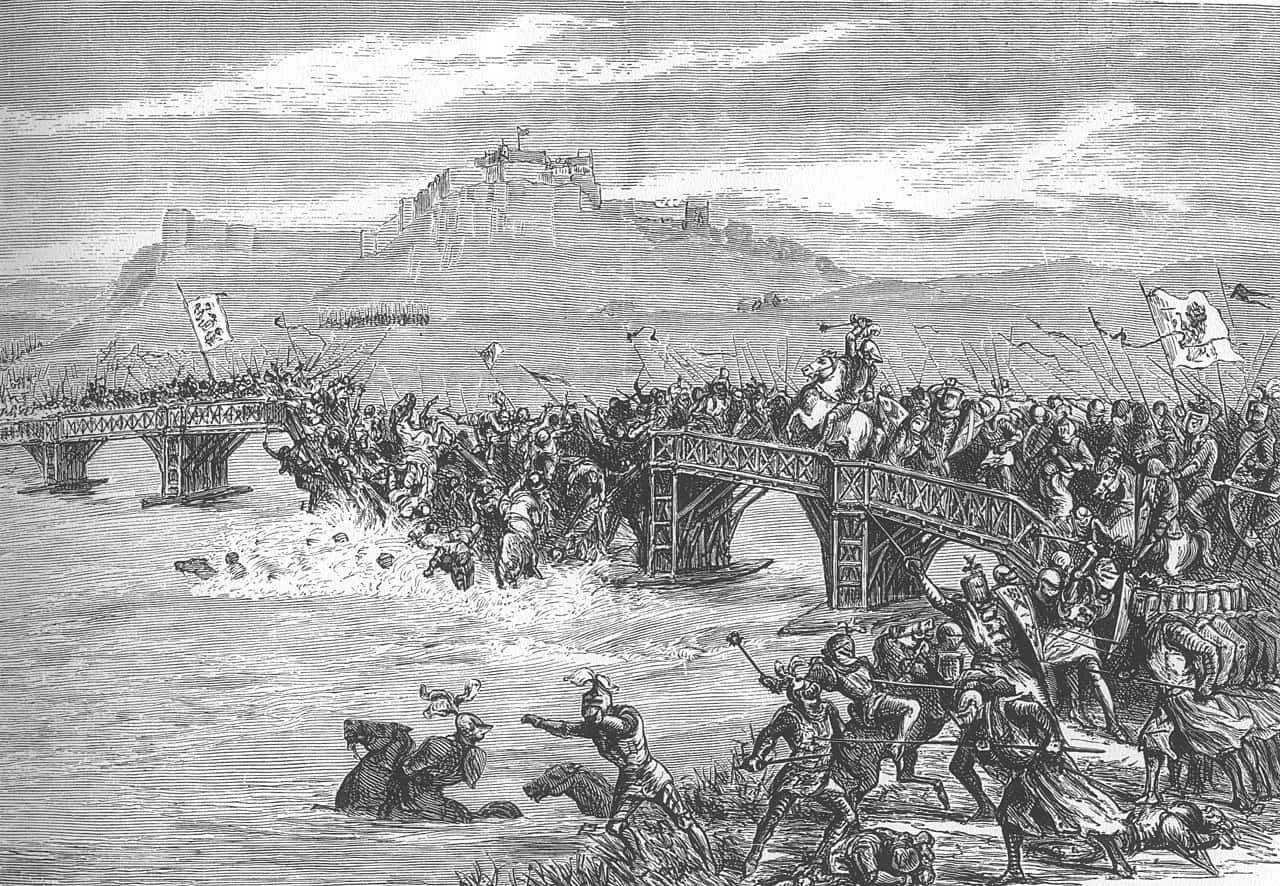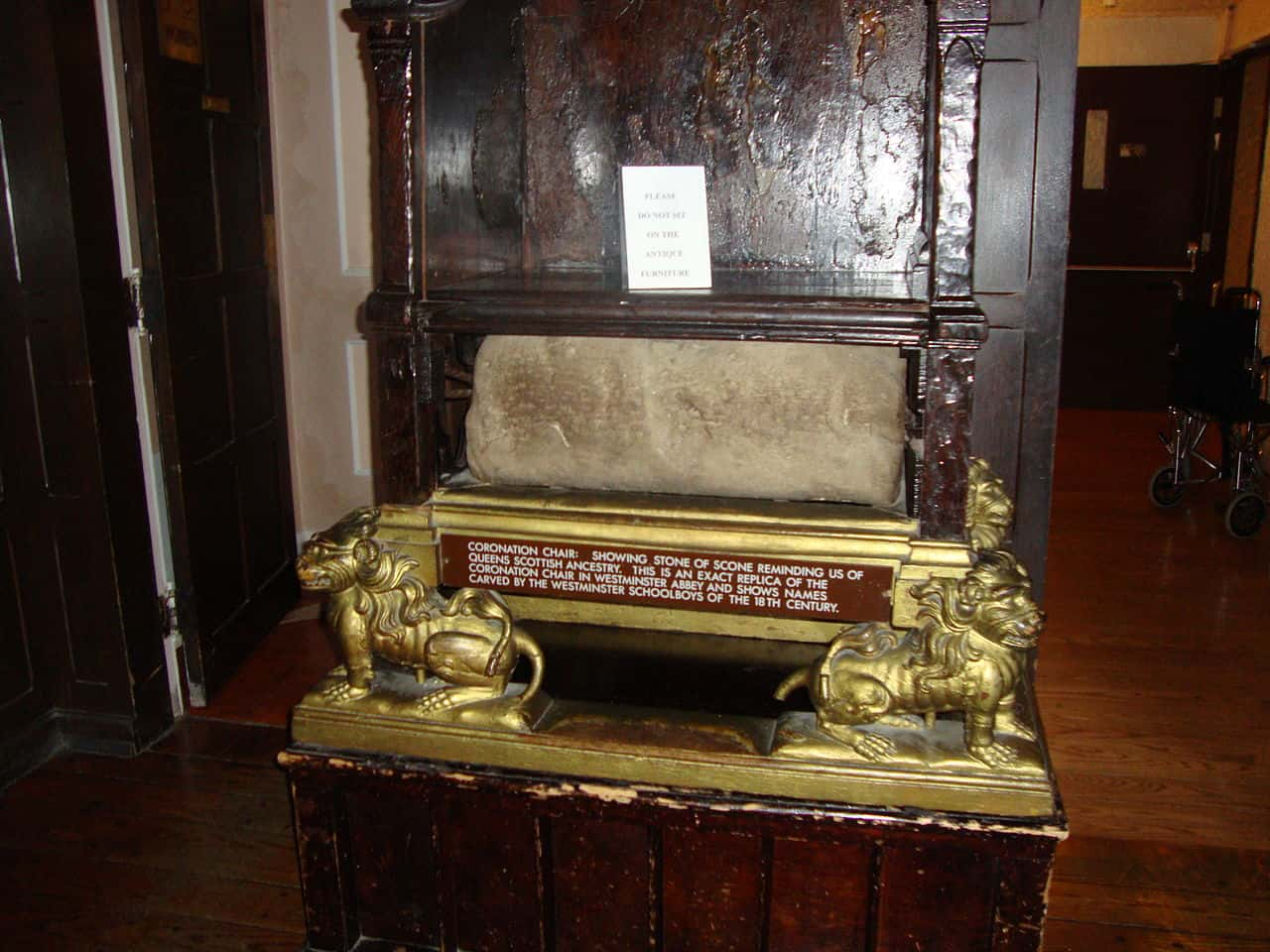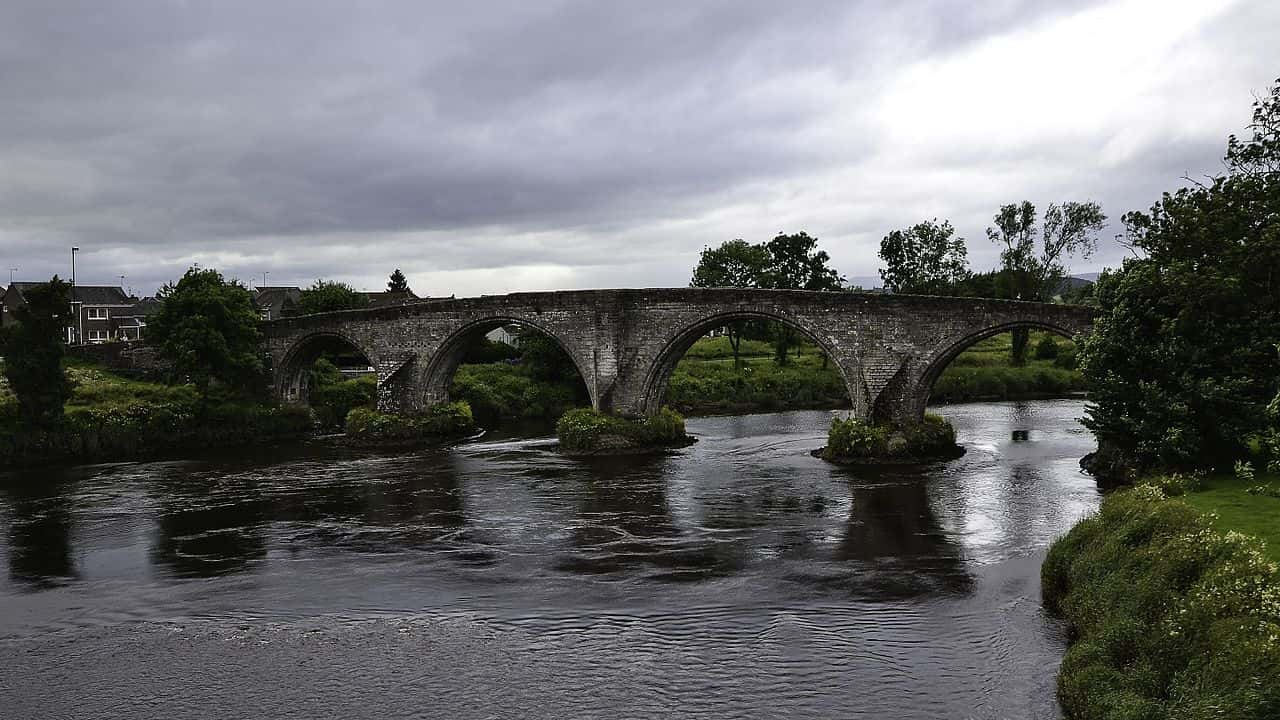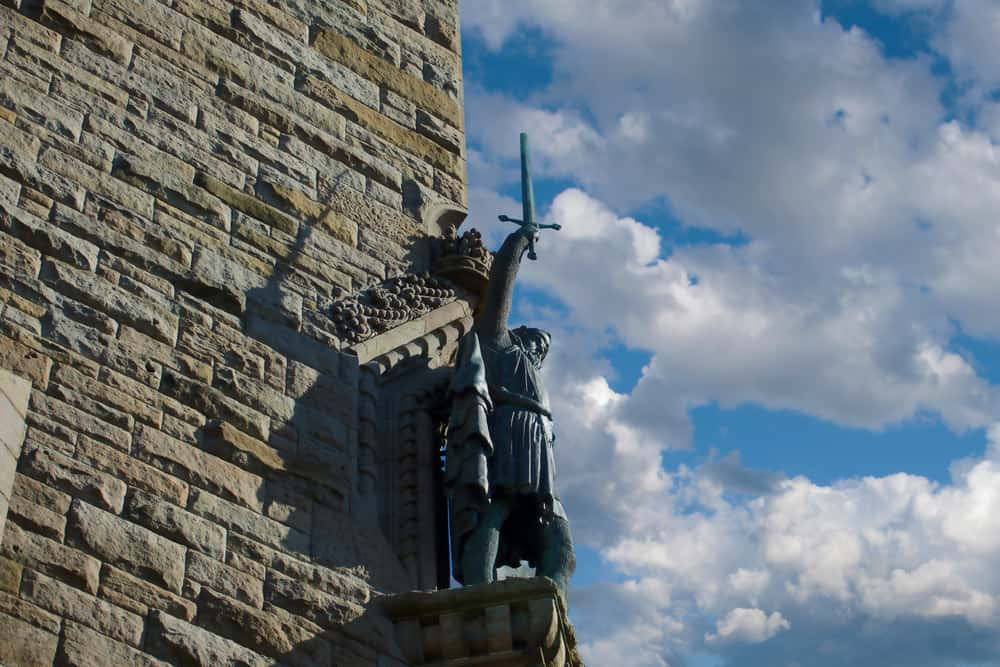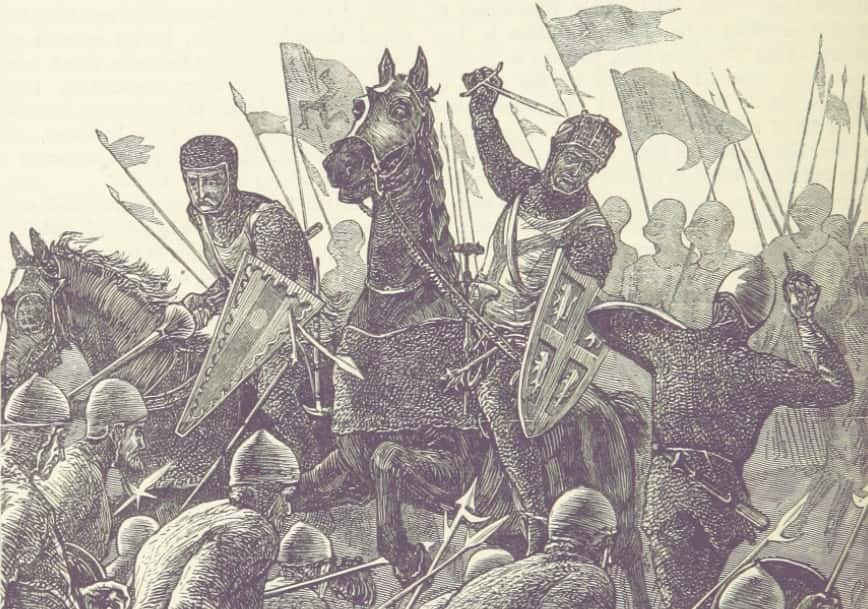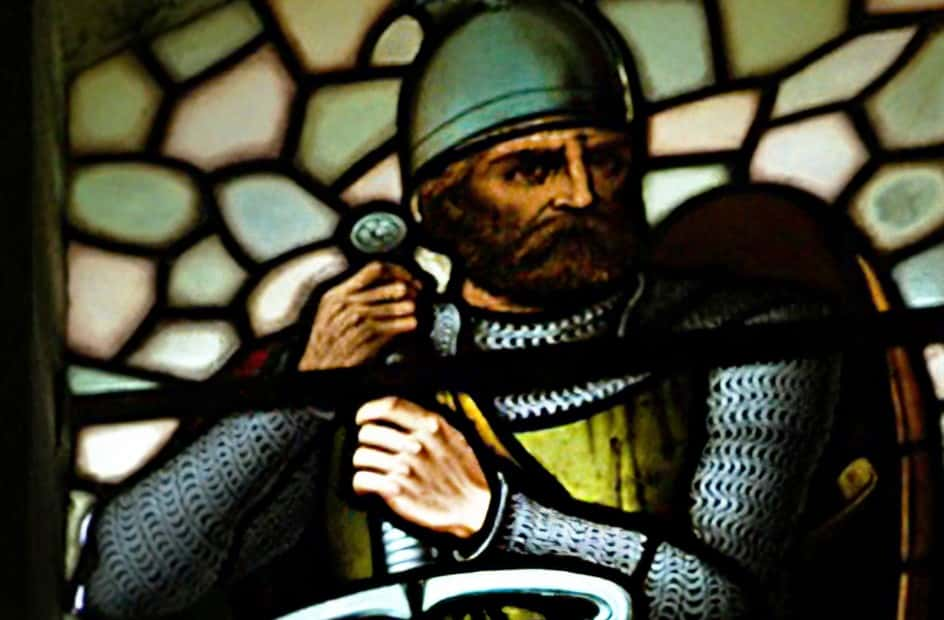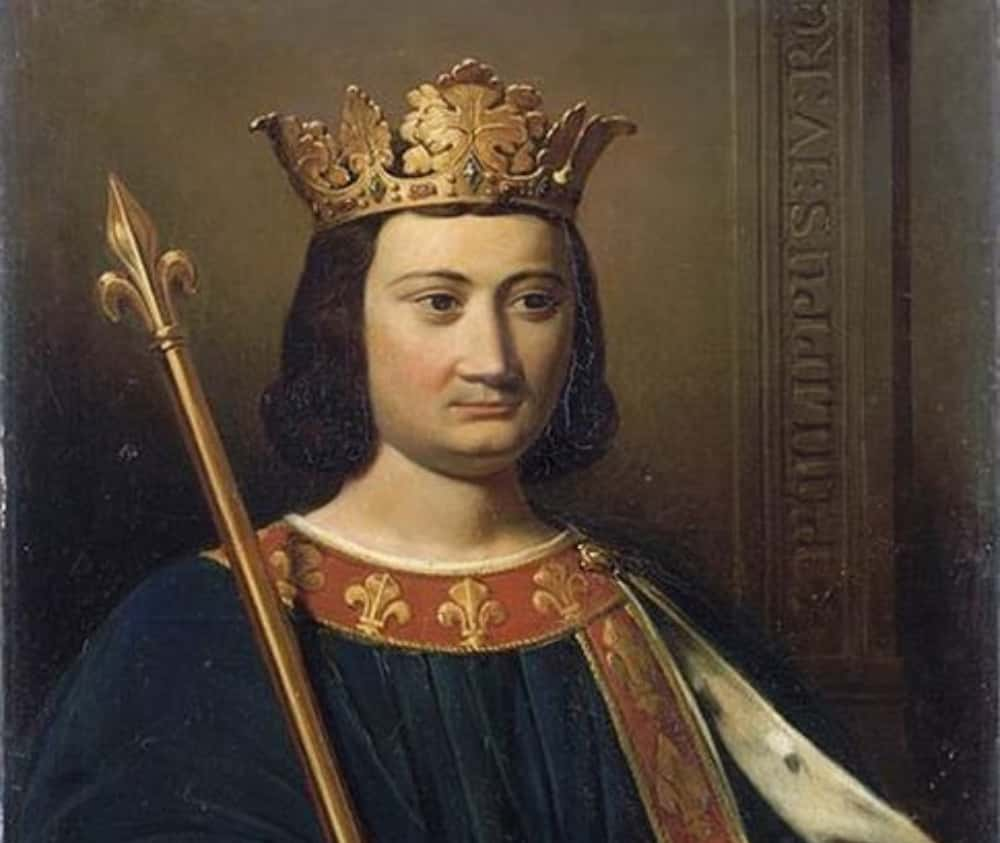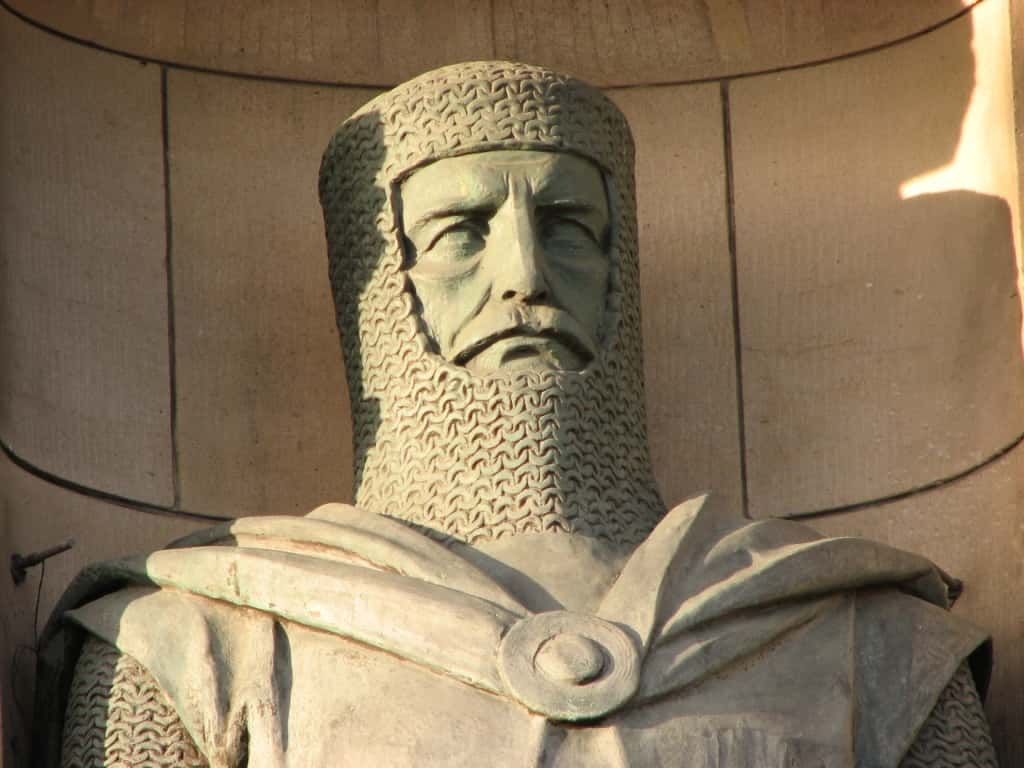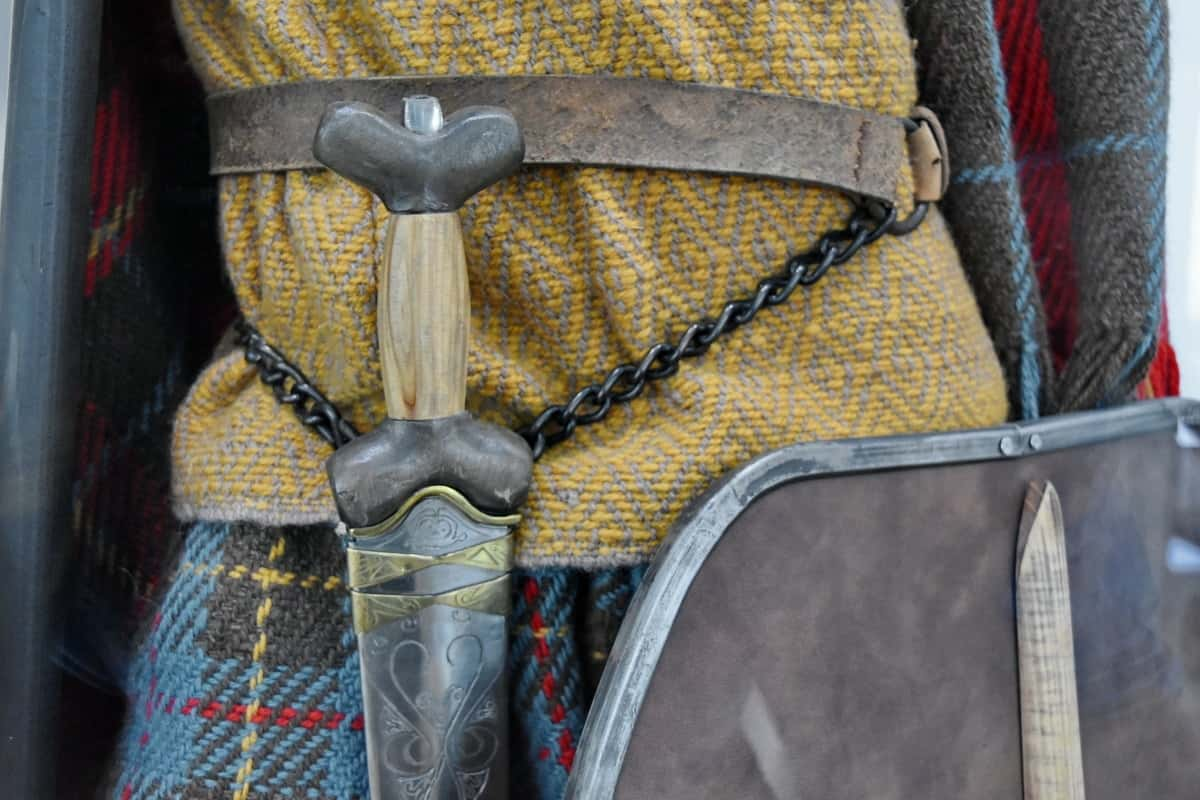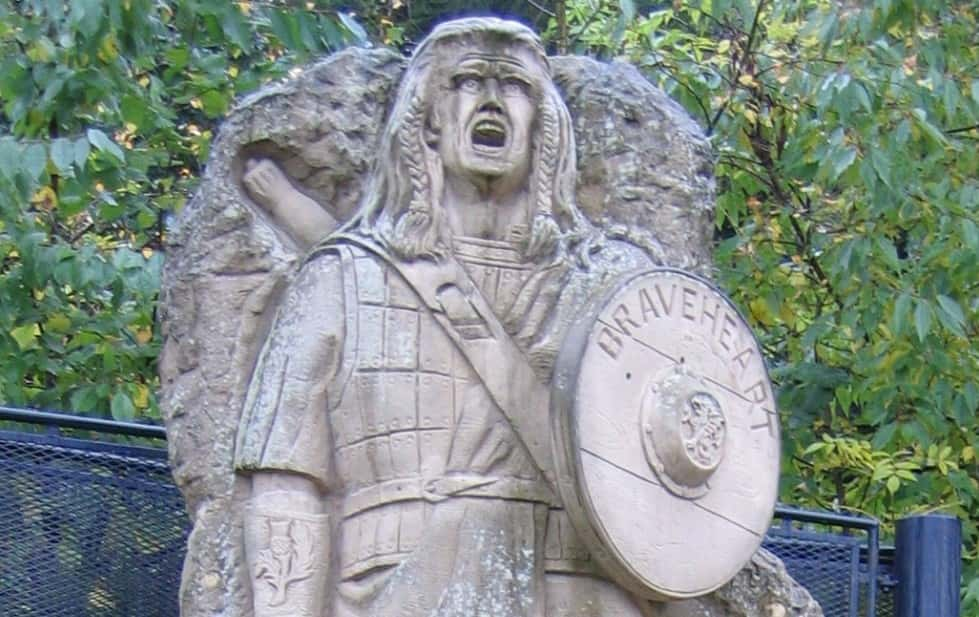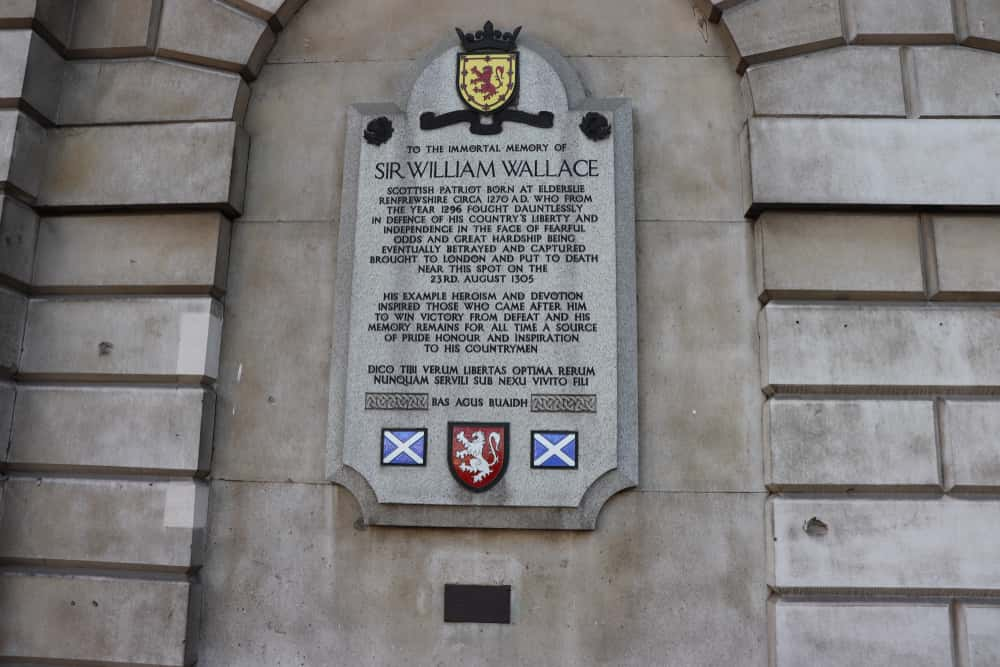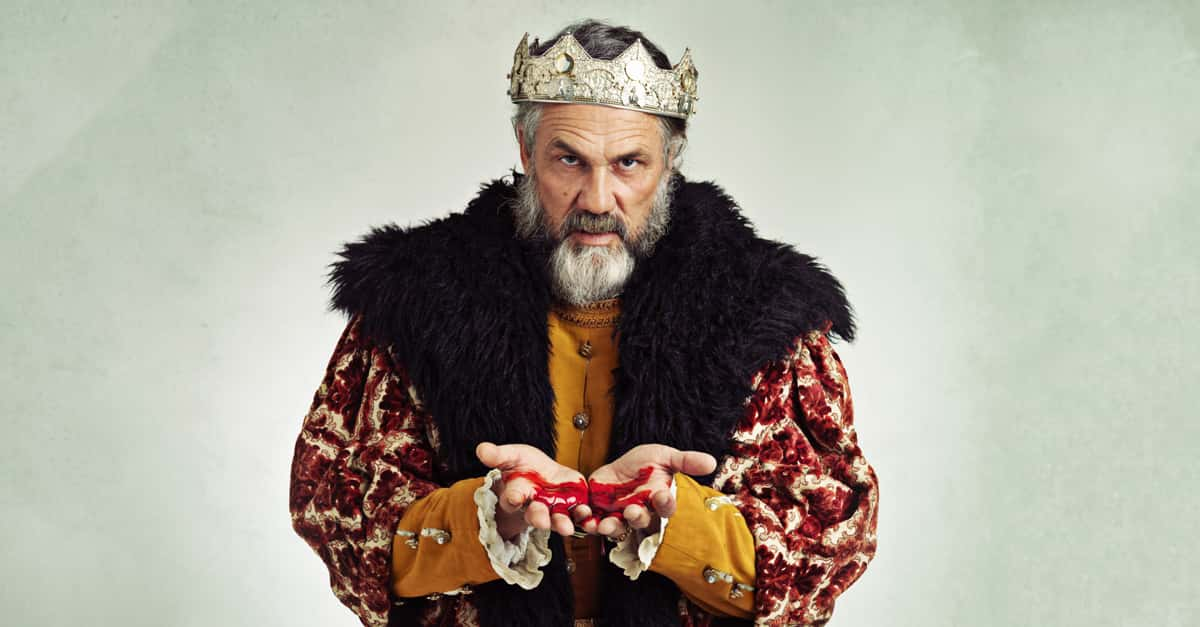Disclaimer: At Factinate, we always strive for historical accuracy. However, sometimes it’s hard to get it right, and this is one of those times. William Wallace's life is surrounded by legend, and historians have struggled to either verify or discredit many of the stories about him. Where historians disagree, or when commonly told stories lack hard, indisputable evidence, we’ve tried to capture this by using words like “allegedly” or “reportedly.”
"I can not be a traitor, for I owe him no allegiance. He is not my Sovereign; he never received my homage; and whilst life is in this persecuted body, he never shall receive it. To the other points whereof I am accused, I freely confess them all. As Governor of my country I have been an enemy to its enemies; I have slain the English; I have mortally opposed the English King; I have stormed and taken the towns and castles which he unjustly claimed as his own. If I or my soldiers have plundered or done injury to the houses or ministers of religion, I repent me of my sin; but it is not of Edward of England I shall ask pardon."—William Wallace, as quoted in Lives of Scottish Worthies (1831)
Sir William Wallace was a Scottish Knight and one of the country's primary leaders during the Wars of Scottish Independence. After his death, he was remembered as a patriot, a national hero and an advocate for Scottish nationalism. Today, there are several monuments and memorials to the Scottish giant, keeping his legacy alive in the hearts and imaginations of the people. However, his story is undeniably most broadly known from Mel Gibson's iconic (if not exactly historically accurate) portrayal. The real William Wallace was extremely different than the one that appeared on screen in Braveheart, but his life was no less amazing. Below are 42 facts about this legendary Scottish hero.
William Wallace Facts
42. Et Tu Menteith?
Sir John Menteith was supposedly a friend and ally to William Wallace, but he turned out to be a Scottish Brutus, betraying Wallace to the English in exchange for an Earldom. While Wallace was sleeping, Menteith stole all of his weapons, convinced him that their house was surrounded by English soldiers, and persuaded Wallace to go to Dumbarton where he swore (falsely) that Wallace would come to no harm. With friends like that, who needs enemies!
41. Who’s Your Daddy?
Historians generally believe Wallace was born between 1270-1272, but the exact date of his birth and his parentage are a source of argument. Some documents list him as one of three sons born to the Scottish knight and land-owner Malcom Wallace, but the discovery of Wallace’s seal in 1999 ascertained that he was in fact the younger son of Alan Wallace of Ayrshire. Some documents even suggest that Malcom and Alan were one in the same, and that he was just one of those guys who went by his middle name.
40. The Wallace
Once upon a time, history was recorded by bards and minstrels, and this lead to a number of shall we say… embellishments about William Wallace’s life. In 1488, a Scottish minstrel by the name of Blind Harry (great minstrel name, by the way) wrote an epic poem called The Acts and Deeds of the Illustrious and Valiant Champion Sir William Wallace, Knight of Elderslie, which was a collection of the many legends that he’d gathered about Wallace. Harry always claimed that the book was historically accurate, but considering that Wallace had been executed 183 years before it was published and that few of the dates and events match up, it’s really just a romance. This didn’t really matter much to the Scots however, and “The Wallace,” as it was known, was the second-most popular book in Scotland next to the bible. The poem was also the basis for Braveheart, which in part explains the film's rampant historical inaccuracies.
39. It Depends on How You Look at It
William Wallace was a patriot and a martyr to the Scottish people, and he became the symbol of the country’s fight for independence from England. The English on the other hand saw him in a completely different light. According to English history, he was a traitor, an outlaw, and a murderer. Technically they were both right, but nobody’s making movies and writing poems about King Edward I. Just saying!
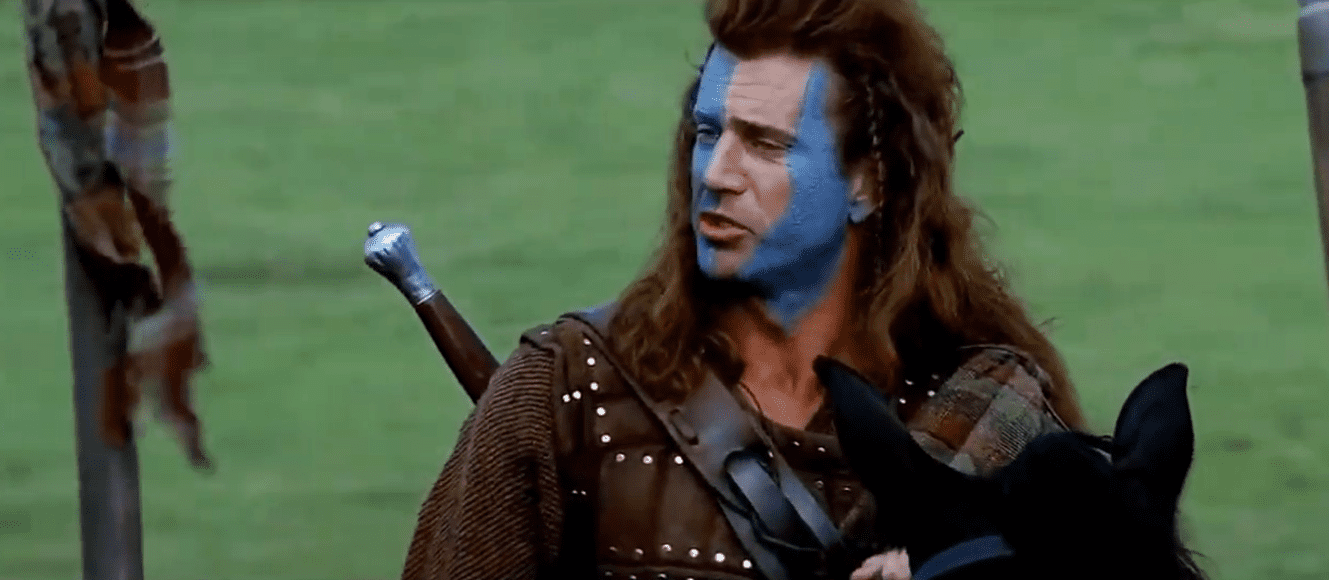 Braveheart, Paramount Pictures
Braveheart, Paramount Pictures
38. Semantics
When Wallace stood trial for Treason against King Edward I of England, Wallace had the perfect answer. He told the King that he couldn’t possibly have betrayed him because he’d never been loyal in the first place. He had a point!
37. Artistic Licence
Until Mel Gibson’s film Braveheart introduced William Wallace to the world, he was hardly known outside of Scotland. The film has been greatly criticized for its historical inaccuracy, but some believe it helped spark the 1997 Scottish referendum which allowed the Scottish people to vote on establishing the first Scottish Parliament since 1707. I guess they owe Mel Gibson a thank you, and not too many people can claim that!
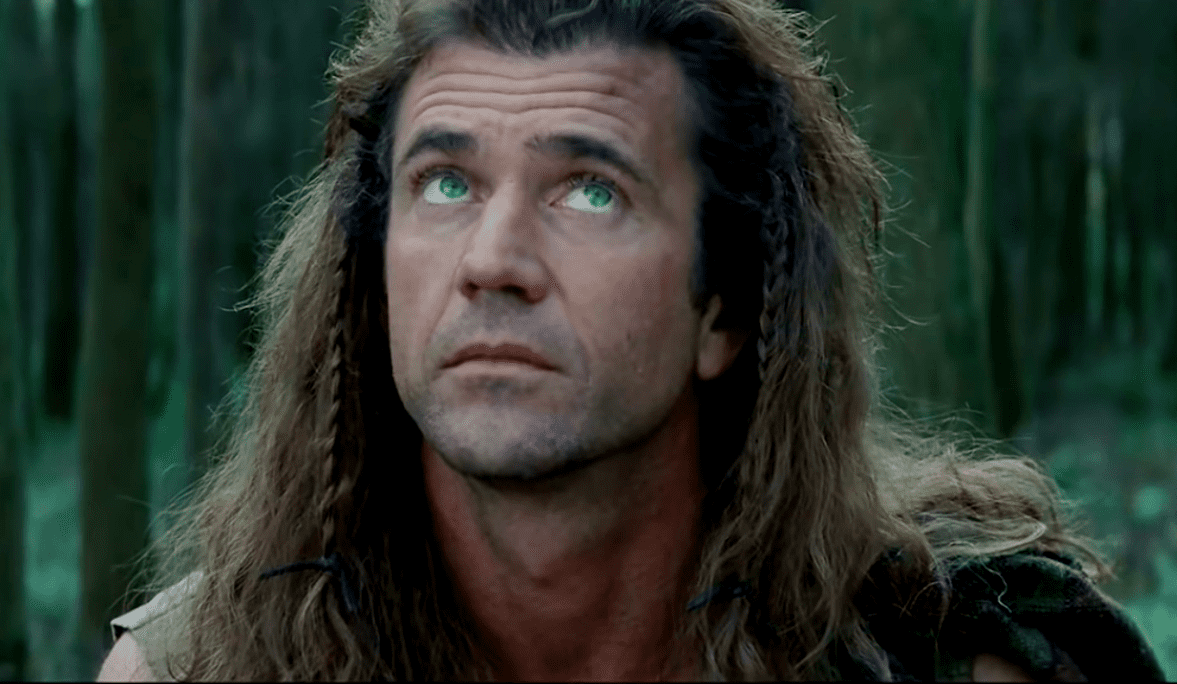 Braveheart ,Paramount Pictures
Braveheart ,Paramount Pictures
36. An Early Education
Being a younger son, Wallace was originally destined for a life in the church. He was apparently educated by his mother’s brother, the priest of Dunnipace, who gave him more than a religious education. It was from him that Wallace supposedly learned to hate and fight oppression—a lesson he obviously took to heart.
35. King Longshanks
Right around the same time that Wallace was born, Edward I, the son of King Henry III, became the King of England. Due to his 6’2" tall frame and his long legs and arms, he earned the nickname Longshanks. At least that’s better than a lot of other things he might have been called.
34. So… Marriage is Out
One of the first things that Edward I did as king was to conquer Wales, but this was only the beginning of his plan. Edward intended to conquer all of Britain, and the death of King Alexander III of Scotland in 1287 made the country ripe for the taking. Edward initially planned to marry his son, Edward of Carnarvon, to Alexander’s four-year-old granddaughter and heir, Margaret of Norway, to take control of Scotland, but there was a teeny tiny wrinkle in this plan. Margaret died on the way to Scotland, which meant that Edward had to find another way to get what he wanted.

History's most fascinating stories and darkest secrets, delivered to your inbox daily.
33. Guardians of Scotland
When Alexander III fell off his horse and broke his neck, this led to a crisis of succession. Alexander’s only heir was just a baby, and somebody needed to rule in the interim. A group of six men made up of Scotland’s major nobles and bishops were appointed to rule the country in the infant queen’s name, and they were called The Guardians of Scotland. At this point all should have been hunky dory, but the Guardians didn’t exactly get along with each other. Their infighting resulted in some of the regrettable and foolish decisions that led to the Scottish rebellions a decade later.
32. Rival Claims
With Margaret’s death in 1290, a new battle for the throne of Scotland ensued. Both Robert the Bruce's grandfather and John Balliol claimed to be the rightful heir, and to make matters even more complicated, they both had pretty good claims. The possibility of civil war understandably made people pretty nervous, and in what seemed like a good idea at the time, they asked Edward I to intercede and keep the peace. Edward was more than happy to exercise his authority, but not in the way that they’d expected. He decided that this was his chance to take control of Scotland once and for all, and he demanded to be recognized Superior Lord of Scotland—a grandiose title if I've ever heard one.
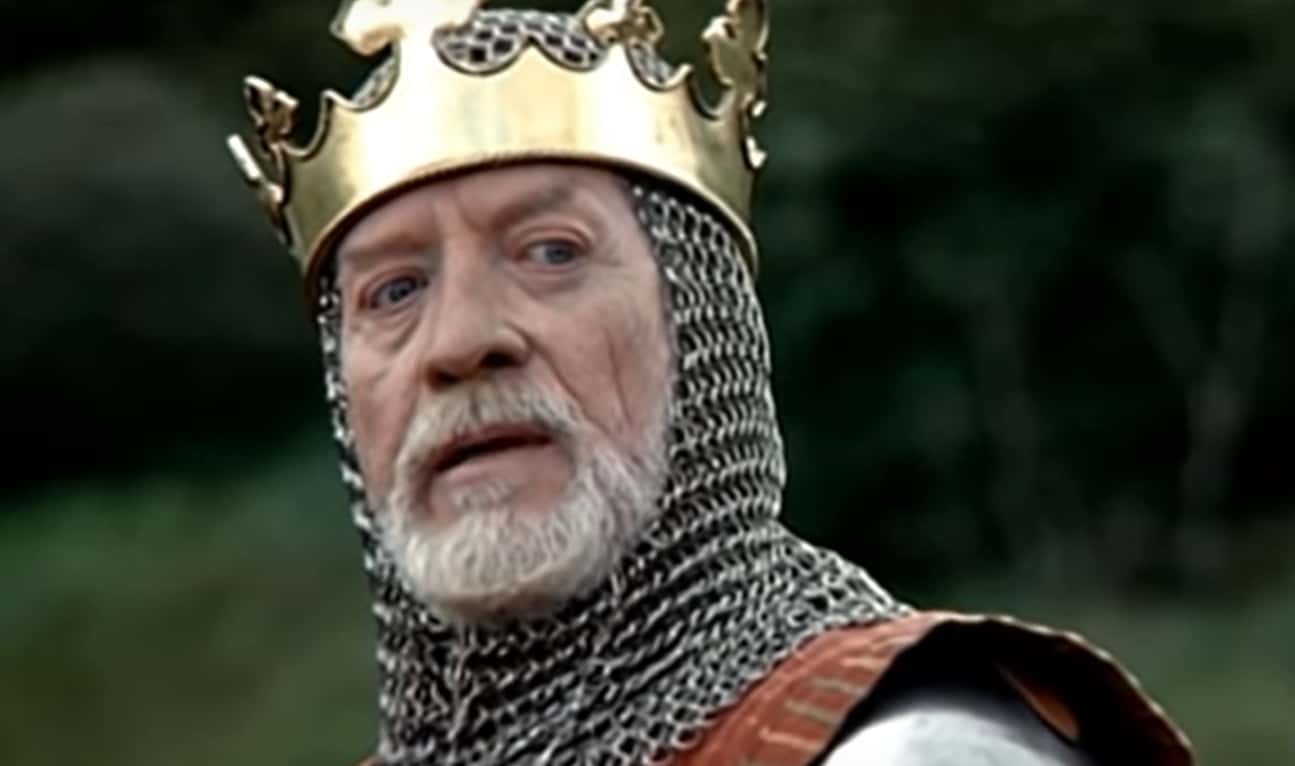 Braveheart, Paramount Pictures
Braveheart, Paramount Pictures
31. The Cheerful Giant
In the Middle Ages, the average height of a man was about 5'6", but William Wallace was tall even by today’s standards. He stood a towering 6’7", was big-boned, broad shouldered and “cheerful in appearance.” No portraits of Wallace were painted during his life, so what he actually looked like is based as much on myth as it is on fact.
30. Freedom’s Sword
It’s only natural that a man the size of William Wallace would have an equally large sword. The Wallace Sword is approximately 5’4" in length from hilt to blade and weighs over 6.6 pounds. The sword, also known as Freedom’s Sword, was believed to have remained at Dumbarton Castle after Wallace’s capture, but then disappeared for 200 years before King James IV ordered the handle repaired in 1505. Today, the sword is on display in the Hall of Heroes, located on the second floor of the Wallace Monument. If only swords could talk, this one would definitely have some stories to tell!
29. A Fight for Women
The Wallace Sword has always been a symbol of freedom and in 1912, suffragette Ethel Moorhead smashed the case to highlight the struggle of women to secure the right to vote. She was sentenced to six days in Perth Prison, and later returned to Stirling with some of her colleagues to give a talk about their cause. Everything from the trial to the talk were extensively covered by the press, so it’s safe to say she got what she wanted.
28. Null and Void
As part of the marriage agreement between King Edward I’s son and Margaret of Norway, the Guardians of Scotland drew up the Treaty of Birgham which guaranteed Scotland’s independence. Had the marriage taken place, Scotland would have remained free and separate from England (probably), but since Margaret died, the treaty was invalidated—a point which Edward of course used to his advantage.
27. King but Not King
In what became known as “The Great Cause,” King Edward I presided over the case of which of the 13 claimants had the most legitimate claim over the Scottish throne. John of Balliol won out, but he wasn’t exactly welcomed with open arms. Most of the nobles, including the Bruces, didn’t want Balliol to be king, but it didn’t really matter since Edward had no intention of letting him rule. As soon as he was crowned, he forced John to pay homage to him, which definitely didn’t earn him any points with the Scottish people.
26. Complete Humiliation
As if having to basically turn over your country to England wasn’t bad enough, Edward also announced that he would also be hearing complaints from the Scottish court and that King John would be held liable for damages in every judgement against him. Things really came to a head in 1293 when Edward insisted on hearing the Macduff case. When Balliol complained that Edward had no right to interfere in the case, Edward responded by charging him with extreme contempt and forcing him to turn over three Scottish castles and their towns until the contempt was clear. If he still had any doubts about his position, this showed John exactly where he stood—right under Edwards boot.
 Braveheart, Paramount Pictures
Braveheart, Paramount Pictures
25. I Shot the Sheriff…
Okay. So William Wallace didn’t technically shoot British sheriff William Heselrig, but in 1297 he did kill him and all of his men. The exact reason for the murder is unknown. Legend has it that Heselrig ordered the execution of Wallace’s wife, and so the killings were out of revenge, but that story is probably just that—a legend. Regardless of why he did it, the act put Wallace on the map and made him known as a notorious warrior.
24. Open for Business!
After their victory at the Battle of Stirling Bridge, Wallace and Andrew Moray wanted to send a message to the mayors of Lubeck and Hamburg in Germany that Scottish ports were back under Scottish authority. The Lubeck Letter, which was written on October 11, 1297, invited the German traders to deal directly with Scottish merchants instead of the English. The letter, which is the only surviving document issued by Wallace, was thought to have been lost during WWII but was miraculously found in a Soviet archive in the 1970s and was returned to Lubeck.
23. Made-Up Marion
Some historians claim that William Wallace was married to a woman by the name of Marion Braidfute and had a daughter with her. Marion was supposedly the daughter of the laird of Lamington, but there’s no mention of her at all until the revised edition of Blind Harry’s epic poem was printed in 1570. Wallace expert Ed Archer believes that the Baillies of Lamington, a wealthy family from Lanmark, paid for the revision in hopes of claiming to be descendants of Wallace (through his daughter) and using the connection to get an in with Mary Queen of Scots. Talk about twisting the facts!
 Braveheart, Paramount Pictures
Braveheart, Paramount Pictures
22. Sharing the Glory
William Wallace is remembered for the courage he displayed during the Battle of Stirling Bridge, but historians tend to forget that he didn’t do it alone. While Wallace was leading the rebellion in Lanark and in the southern part of Scotland, a young Scottish patriot by the name of Andrew Moray was fighting Edward in the north. Somewhere along the line, he and Wallace met and decided to join forces, and on September 11, 1297, they fought and won the Battle of Stirling Bridge. It’s Moray who is believed to have come up with the entire plan, but sadly he didn’t live to fight another battle, dying from wounds sustained in the fray just a few weeks later.
21. Swearing Allegiance
King Edward I was no dummy. After the defeat of Scottish forces at Dunbar, he knew that the proverbial natives were getting restless and he had to do something to maintain his control over Scotland. In August 1296, he summoned all of the most important Scots to Berwick to sign new documents swearing allegiance and loyalty to him. 2,000 Scottish nobles signed the Ragman Rolls, and they basically handed over their self-respect along with their signatures.
 Braveheart, Paramount Pictures
Braveheart, Paramount Pictures
20. Empty Coat
Had John of Balliol been a stronger king, it’s entirely possible that King Edward would not have so easily gained control of Scotland, and history might look very different. From the moment of his appointment, he let Edward walk all over him, and when he did finally decide to fight back, he was handily defeated by the English. After his defeat at the Battle of Dunbar in 1296, Balliol gave up and officially surrendered the throne to Edward. His royal insignia was removed in a pretty humiliating ceremony at Montrose, earning him the nickname Toom Tabard, or empty coat, which he pretty much was.
19. Stealing the Stone
The Stone of Destiny, also known as the Stone of Scone, is a sandstone slab with alleged biblical origins that was originally used in the coronation of Scottish monarchs. After defeating the Scots in the Battle of Dunbar in 1296, Edward I added insult to injury by stealing the stone from the Scone Abbey in Scotland and having it built into his own custom-built coronation chair. For 700 years the stone remained at London’s Westminster Abbey, but in 1996, the British Prime Minister John Major decided to give it back to Scotland with the provision that England be able to borrow the stone for future coronation ceremonies. How generous!
18. Not in His Corner
Robert the Bruce’s grandfather had been one of the claimants to the Scottish throne before the Scottish rebellions, and when Edward chose John Balliol instead, his father and grandfather understandably refused to back him. There was no forgiving and forgetting here, and in 1296, when Edward invaded Scotland, Robert and his father actually lent him their support. They rightly figured that by supporting Edward, Balliol would be forced to abdicate, and they could finally take the crown. No doubt Edward’s decision to rule Scotland as an English province came as a nasty surprise.
17. Achieving his End
Robert the Bruce was a pretty fickle character. With an eye permanently set on taking the Scottish throne, he supported whichever side he thought would get him what he wanted, which at one time, meant supporting William Wallace. In 1298, after Wallace’s defeat at Falkirk, Robert briefly supported the rebellion before signing a treaty pledging his loyalty to Edward in exchange for keeping his lands.
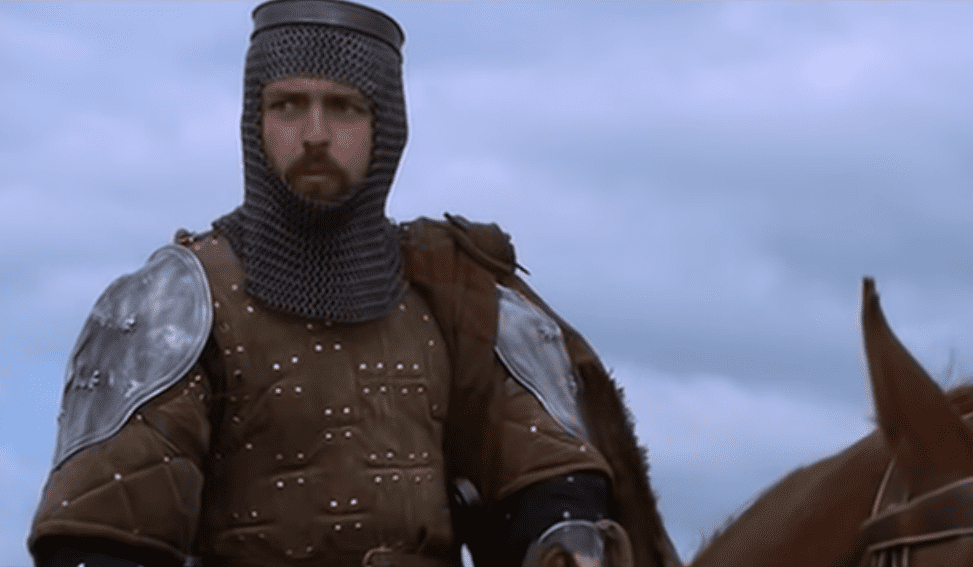 Braveheart, Paramount Pictures
Braveheart, Paramount Pictures
16. Lying in Wait
As Wallace and his allies began retaking Scottish lands, the English decided that they’d better head to Dundee to secure their last remaining territory in the north. To get there, they needed to cross the Stirling Bridge, but they’d also have to get past the waiting Scottish fighters. The English decided to cross anyway, foolishly ignoring the fact that the bridge was too narrow to fit more than two horses across. Wallace and Moray had a smart plan. They waited for the first group of English soldiers to cross, then cut them off and slaughtered them. Unable to believe what had just happened, the Earl of Surrey ordered the bridge destroyed, and he and his forces retreated with their tails between their legs.
15. Elevated Status
After their victory at the Battle of Stirling Bridge, Wallace and Moray were effectively handed the Keys to the nation when the nobles made them Guardians of Scotland. This gave them complete decision-making power and made them commanders of the army. Moray’s time as Guardian was cut short by his death from his battle wounds, but Wallace continued ruling Scotland in Balliol’s name while the latter was imprisoned in the Tower of London.
14. No Confidence
Just a year after his victory at Stirling, Wallace’s troops were defeated by Edward in the Battle of Falkirk. Wallace escaped, but the crushing loss totally trashed his reputation and he had no choice but to resign his guardianship.
13. Scorched Earth
On some level, Wallace might have realized that he and Moray had gotten lucky at Stirling and he knew that he could never hope to match the numbers of Edward’s army. Anxious to avoid another battle, he tried employing a scorched earth strategy; after relocating the people and animals, he burnt his own villages and destroyed his people’s crops, all with the aim of leaving no resources for the army and forcing retreat. This strategy probably would have worked if Edward hadn’t found out that Wallace and the Scots were hiding in nearby Falkirk. With that little nugget of information, Edward marched his army overnight and came face-to-face with Wallace and his army the next morning. Busted!
12. Dance the Best you Can!
Believe it or not, despite being greatly outnumbered, Wallace’s defeat at Falkirk wasn’t as swift as Edward had imagined it would be. Wallace had prepared his army well, and as the battle began, he reportedly called out to his men: “I have brought you to the ring. Dance the best you can.” The Scots put up a pretty good defensive fight and caused a number of English casualties, but Edward’s forces eventually managed to drive away the Scottish Cavalry and defeat their archers. Without these protections, the Scots had no chance, and the majority of the army was annihilated.
11. Taking up the Mantle
With the defeat at Falkrik, the battle for Scottish Independence might have ended, but newly appointed joint guardians Robert the Bruce and John Comyn picked up where Wallace left off and continued the fight. Wallace also didn’t totally disappear from sight, and in 1303 he rejoined the resistance fighting against the English as much as he could until his capture.
 Braveheart, Paramount Pictures
Braveheart, Paramount Pictures
10. Fiery Retaliation
In 1297, the same year that Wallace reportedly hacked William Heselrig to bits, he also caused a stir in his retaliation for the hanging death of his maternal uncle Sir Ronald Crauford. Wallace allegedly locked the entire English Garrison in a building at Ayr and torched the place, burning everybody inside to death. Extreme, but effective. However, since the main source for this story was Blind Harry's poem, its actual historicity is doubtful.
9. Return of a King
Between 1299 and 1303, Wallace mostly falls off the map. Historians know that for at least part of that time he was in France drumming up support for the rebellion. At that time Balliol was still in papal custody in France, and rumors circulated around Scotland that he would try to reclaim his throne with help from the French army. It’s possible that Wallace was there to aid in this cause. It's also known that King Philip of France gave Wallace a letter to bring to the King's agents in Rome, telling them to help Wallace in conducting business with the Pope, though it's unclear if Wallace ever actually made it Italy.
8. Simmering Resentment
Although Wallace’s slaying of Heserlig is credited with officially starting the first Scottish Rebellion, resentment of the English had been simmering beneath the surface for some time. The Scots were being unfairly taxed, their nobles were imprisoned, and they were being forced to fight an English war against France. By the time Wallace arrived on the scene, the Scottish people were already at their breaking point, and they eagerly flocked to their new hero and joined the rebellion. Can you blame them?
 Braveheart, Paramount Pictures
Braveheart, Paramount Pictures
7. No Surrender
After successfully recapturing Stirling in 1304, the Scottish nobles initiated a peace process with Edward. For the most part, he treated them decently. Those who surrendered were given roles in government, and had their lands returned. Wallace, on the other hand, wasn’t allowed to surrender, even if he wanted to (Which of course he didn’t). Instead, Edward offered a king’s ransom to anyone who killed or captured him, but he was probably secretly hoping for the latter so he could do it himself.
6. A Pound of Flesh
If you haven’t realized it yet, the Scots really hated the English, but especially Hugh de Cressingham, who was Edward’s rent collector in Scotland. As the story goes, when he was killed at the Battle of Stirling Bridge, the Scots flayed his body and Wallace made a sword belt out of his skin (after it was dried and cured of course), all out of pure hatred. Talk about a gruesome trophy!
5. Temper, Temper!
It's said that Wallace’s first English kill took place when he was around 19 years old. Wallace was well over six feet tall, which was pretty big for that time, and he had what you might call a Scottish temper. The incident allegedly occurred during an argument with the son of a Dundee Constable. Wallace supposedly lost his temper and stabbed him through the heart with his dirk (dagger). In the ensuing confusion he was able to escape, but that was just the beginning.
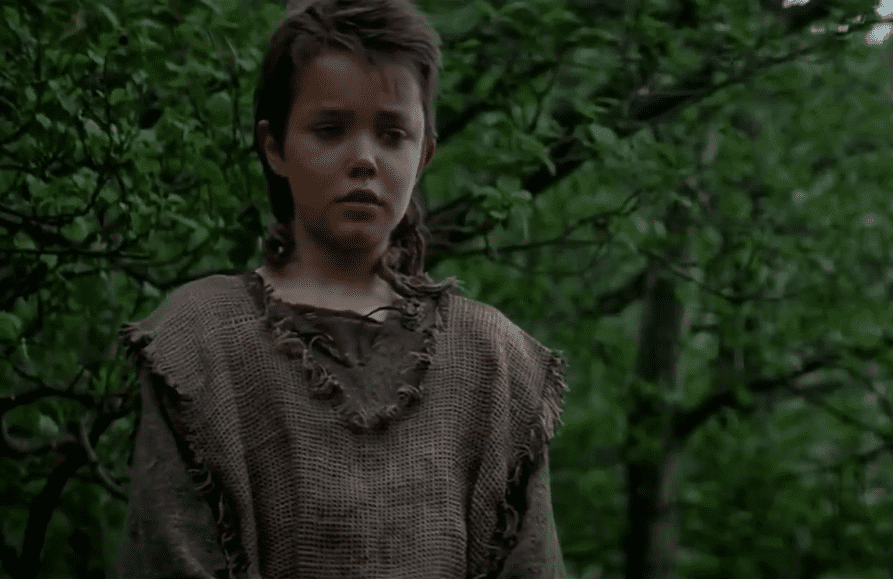 Braveheart, Paramount Pictures
Braveheart, Paramount Pictures
4. Quest for Revenge
Sometime around 1291, Wallace’s father Malcom/Alan was allegedly killed by an English knight by the name of Fenwick. Naturally, this didn’t exactly endear the English to Wallace. In fact, it made his hatred of the English stronger and sent him on one giant revenge quest. Not that you could blame the guy!
3. Outlaw Status
Fast forward about six years after the murder of his father, and Wallace finally gets a chance to make his revenge fantasy come true. He heard from his spies that Fenwick was leading a convoy through Scotland carrying treasures that were stolen from the Scottish. Wallace, along with about 50 followers, ambushed the English and Wallace himself ran Fenwick through with his sword. This officially sealed the enormous Scot's status as an outlaw, but since he was able to reclaim the treasure and see his father’s murderer dead, it was pretty much a win-win situation for old Bill.
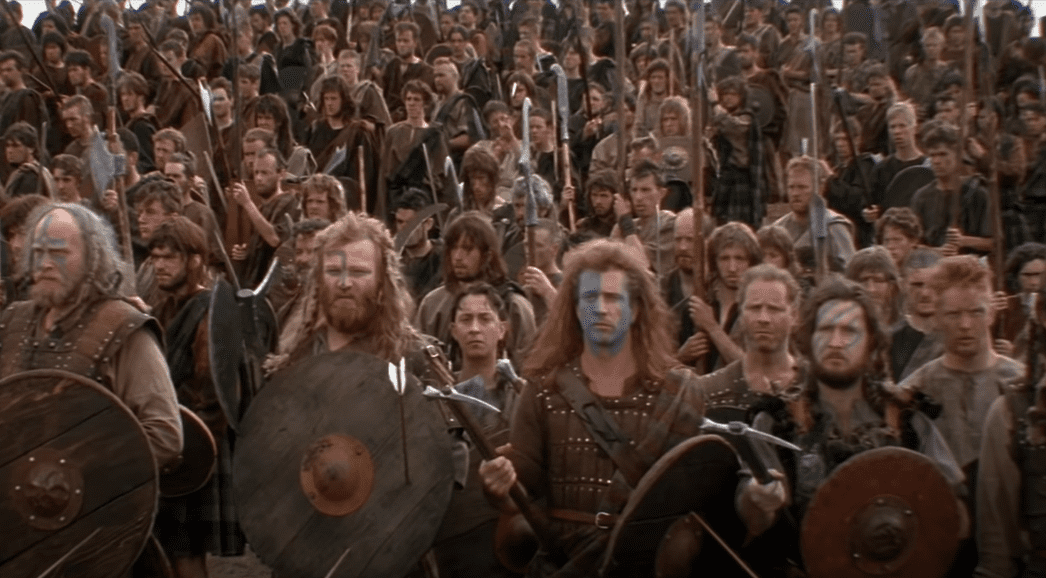 Braveheart, Paramount Pictures
Braveheart, Paramount Pictures
2. Trying the Traitor
When Wallace was finally captured in 1305, he was not afforded a trial in the traditional sense. He never had any opportunity to defend himself (not that it would have mattered), and he was really only there to hear the charges against him and what his punishment would be. Immediately after the trial, he was stripped naked and dragged for several miles face down beneath the tails of a pair of horses to his place of execution. After that, it’s amazing there was anything left of him to hang!
1. Primitive Justice
The death of William Wallace was brutal beyond imagination. Instead of being hanged until dead, he was hanged until he was mostly dead and released so he could watch the rest of his own execution. He was cut open and his bowels were burnt, and then for good measure, he was beheaded and cut into four pieces. After all this, Edward still wasn’t done making his point. Wallace’s limbs were put on display in Stirling, Perth, Newcastle, and Berwick, and his head was put on a spike on top of the London Bridge. Edward totally expected that this elaborate show would crush the Scottish rebellion, but it completely backfired and made a martyr out of Wallace instead.
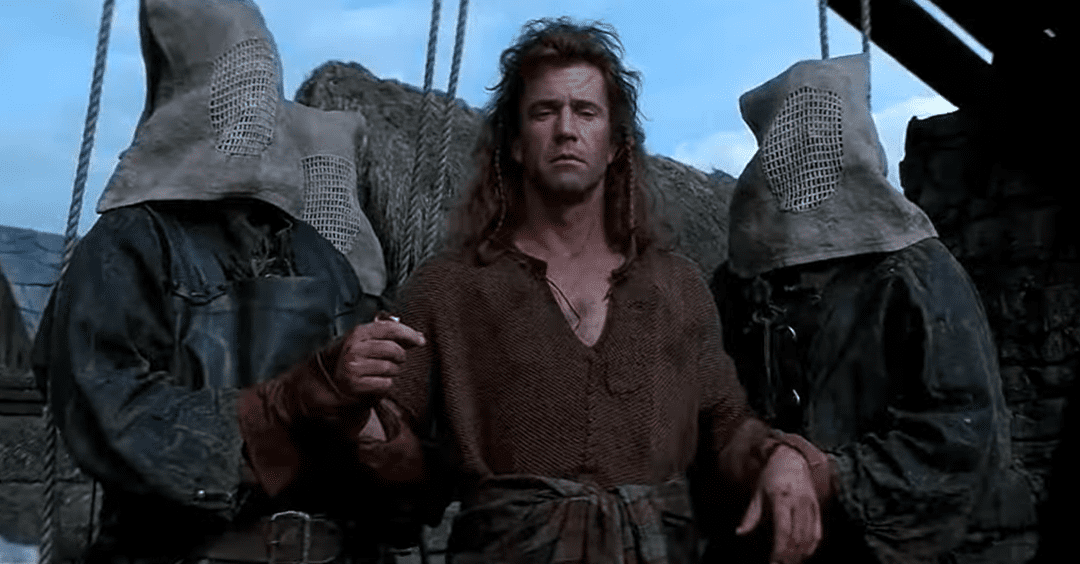 Braveheart, Paramount Pictures
Braveheart, Paramount Pictures
Sources: 1, 2, 3, 4, 5, 6, 7, 8, 9, 10, 11, 12, 13, 14, 15, 16, 17, 18, 19, 20, 21, 22, 23, 24, 25, 26, 27, 28, 29, 30, 31, 32, 33, 34, 35, 36, 37, 38, 39, 40, 41


